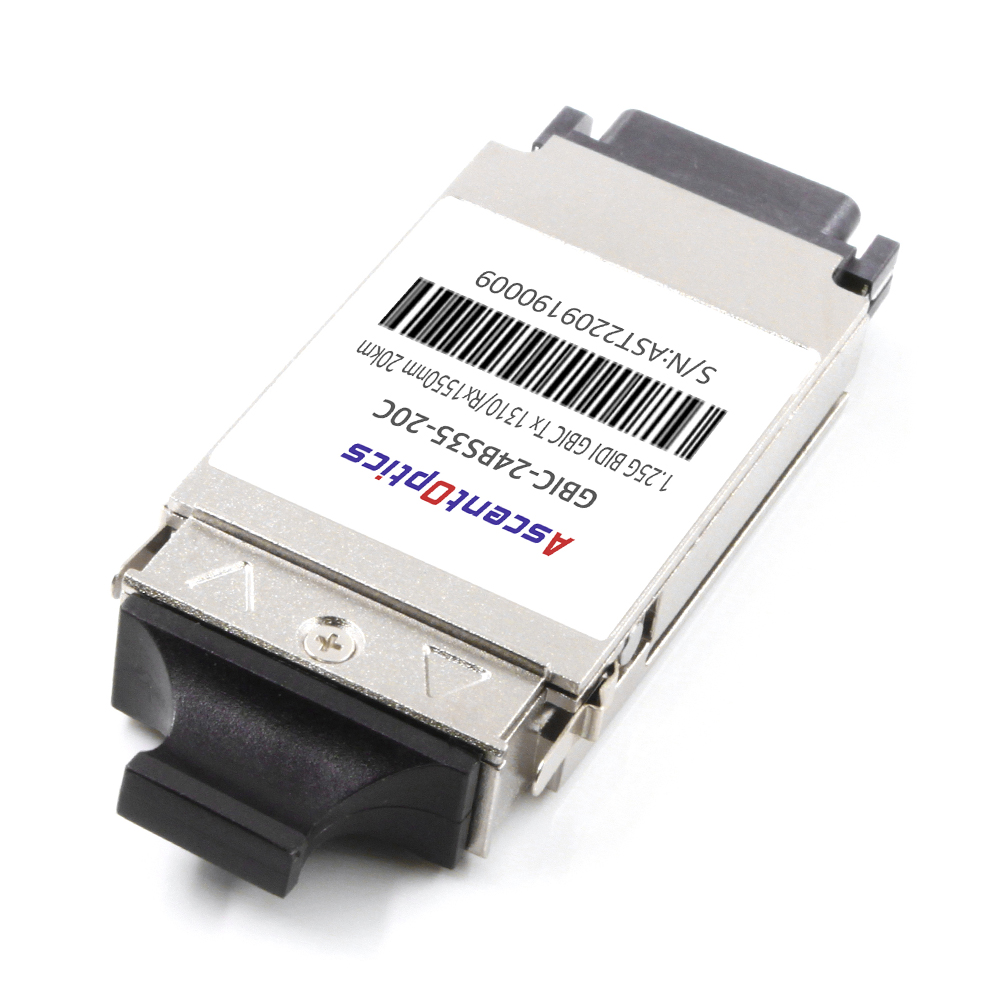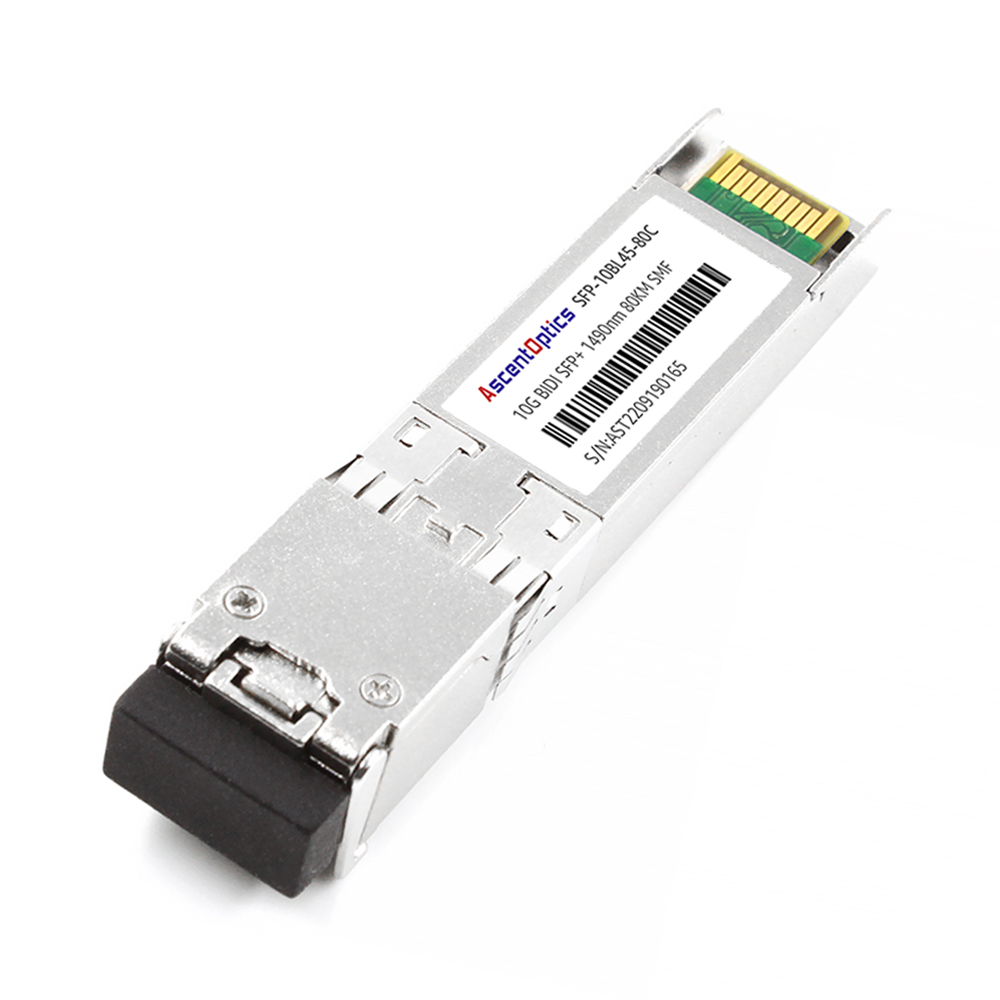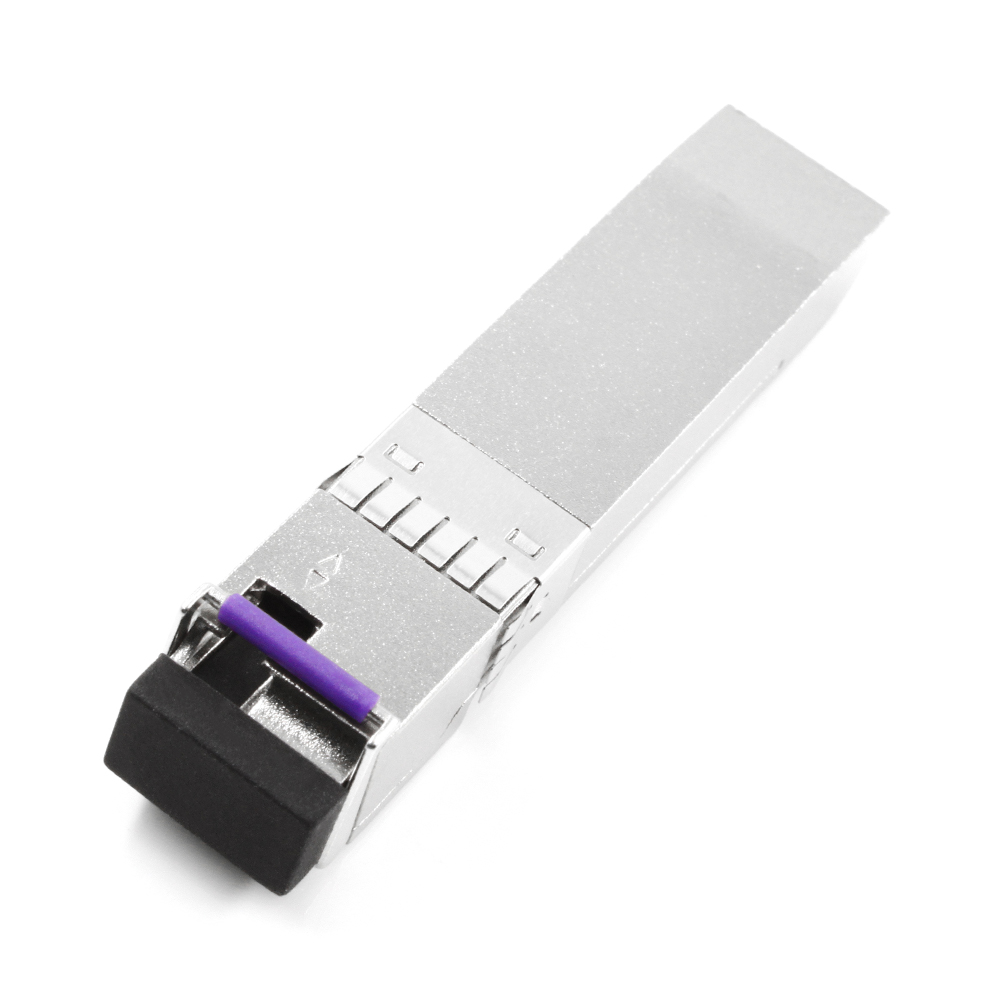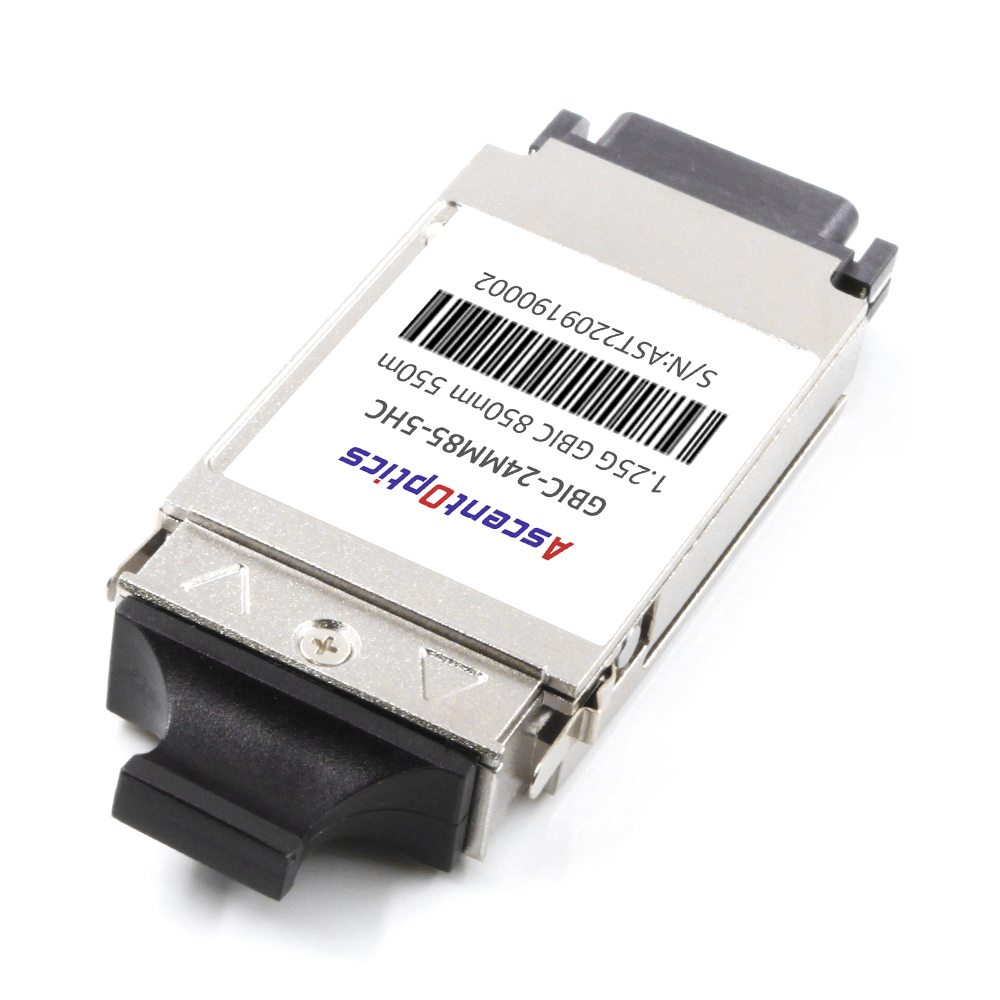As a network engineer, it is essential to understand the technical details of various components used in networking, including GBIC and SFP modules. Both these modules are widely used in network equipment to support optical fibers, and understanding the differences between them is vital to choose the suitable component for network deployment. Here is everything you have to learn about GBIC and SFP.

GBIC stands for Gigabit Interface Converter, a standard transceiver module used to connect Gigabit Ethernet ports to fiber-optic networks. GBIC modules were first introduced in the late 1990s and were widely used in networking equipment until the mid-2000s. GBIC modules use a more significant form factor than SFP modules, and they plug into the Gigabit Ethernet port of a network switch or other network equipment.
SFP stands for Small Form-factor Pluggable, and it is a hot-swappable transceiver module used for both data communication and telecommunication applications. SFP modules were introduced in the early 2000s and are widely used in modern networking equipment. SFP modules have a much smaller form factor than GBIC modules, and they plug into the SFP port of a network switch or other network equipment.
Recommended Reading: What is “gbic”?
GBIC modules are designed to support Gigabit Ethernet and other protocols like Fiber Channel and SONET. These modules provide high-speed connectivity between network equipment using fiber-optic cabling. GBIC modules are available in different types, including single-mode fiber, multimode fiber, and copper cabling. The single-mode fiber GBIC module supports transmission distances up to 80km, while the multimode fiber GBIC module has a maximum transmission distance of 550m.
GBIC modules are compatible with optical cabling and connectors, including LC, SC, and ST. These modules operate on a single wavelength, and the data rates range from 100Mbps to 1Gbps. Some advantages of using GBIC modules include backward compatibility with older equipment, modular design, and support for different optical cabling and connectors.
SFP modules are hot-swappable transceiver modules that can be easily replaced without disturbing the running network. These modules support protocols, including Gigabit Ethernet, Fiber Channel, and SONET. SFP modules are available in different types, including single-mode fiber, multimode fiber, and copper cabling. The single-mode fiber SFP module supports transmission distances up to 120km, while the multimode fiber SFP module has a maximum transmission distance of 550m.
SFP modules are compatible with optical cabling and connectors, including LC, SC, and ST. These modules operate on multiple wavelengths, and the data rates range from 100Mbps to 10Gbps. Some advantages of using SFP modules include a smaller form factor, lower power consumption, and support for higher data rates.
Recommended Reading: Everything You Need to Know about SFP Ports
The critical differences between GBIC and SFP modules are their size, supported data rates, interface compatibility, and power consumption. GBIC modules are more significant than SFP modules and use more power. SFP modules support higher data rates, have a smaller form factor, and consume less power than GBIC modules. The table below summarizes the differences between GBIC and SFP modules:
| Parameters | GBIC Module | SFP Module |
| Form Factor | Bigger (Once Equipped in Switches and Modules with GBIC Ports) | Smaller (Fits in SFP Ports of Switches and Modules, Higher Density) |
| Supported Data Rates | 100Mbps – 1Gbps | 100Mbps – 10Gbps |
| Interface Compatibility | Fiber Channel, Gigabit Ethernet, SONET/SDH | Fiber Channel, Gigabit Ethernet, SONET/SDH |
| Power Consumption | Higher (1.5W – 3W) | Lower (<1W) |
SFP modules provide several advantages over GBIC modules, making them popular in modern network equipment. Some of the main benefits are:
1) Smaller Form Factor: SFP modules have a smaller form factor than GBIC modules, which allows more SFP ports to fit in network equipment, leading to higher port density.
2) Higher Data Rates: SFP modules support higher data rates, ranging from 100Mbps to 10Gbps, making them ideal for modern high-speed network applications.
3) Lower Power Consumption: SFP modules consume less power than GBIC modules, leading to lower operating
GBIC and SFP modules are small transceiver modules used in modern networks. They serve as a connector between optical fiber cables and network devices like routers and switches. These modules are hot-swappable and allow users to change the network topology for different applications easily. This guide will discuss their application and use in modern network systems.

Installing GBIC or SFP modules in switches can be simple if you follow the proper steps. First, turn off the switch and unplug it from the power source. Locate the SFP or GBIC slot on the switch, open the cover, and slide the module into the space. Make sure it is properly seated and secured. After that, turn on the button and verify that the module is recognized and configured correctly. Using compatible modules designed for the specific switch model and network interface is essential.
GBIC and SFP modules are commonly used for fiber optic transceivers, which enable high-speed data transfer capabilities over long distances. They can provide various speed options like 100Mbps, 1Gbps, 10Gbps, and higher as required by the network design. Transceivers can connect cables like single-mode or multimode fiber optic cables. Moreover, SFP modules come in various form factors, like copper and optical, so users can connect network devices with different types of wires using SFP modules.
GBIC and SFP modules are used for optical fiber connections, which have many advantages over traditional copper cables, such as higher data transfer rates, longer distances, and immunity to electromagnetic interference. To connect optical fiber cables to the GBIC or SFP modules, you need to use appropriate fiber optics connectors like LC, SC, or ST. They must be properly cleaned and inspected before installation to ensure good signal transmission quality.
GBIC and SFP modules are commonly used to connect Gigabit Ethernet devices, which offer high-speed data transfer rates over the network. Selecting the appropriate GBIC or SFP module that matches the specific network application and meets the technical requirements is essential. Users should also check for compatibility issues between the GBIC or SFP module and the network device to particular protocols like IEEE 802.3z.
GBIC and SFP modules are also used for Fiber Channel applications, which provide high-speed data transfer rates with low latency requirements. They enable the connection of servers, storage systems, and switches using fiber optic cables. Choosing a specific Fiber Channel application is essential to ensure proper data transfer is significant and minimize data loss. Users should also ensure that the GBIC or SFP module is compatible with the Fiber Channel standard.
Regarding networking, GBIC (Gigabit Interface Converter) and SFP (Small Form-factor Pluggable) modules are commonly used interfaces. These hot-swappable components allow the user to connect multiple networking devices, such as switches, routers, and media converters, by simply plugging in and unplugging the module. However, both modules differ in advantages and disadvantages, making understanding their features and applications essential to select the best option for your networking needs.

GBIC modules were the first type of hot-swappable interface modules introduced in the market. They support up to 1.25 Gbps data transfer speeds, which can easily handle most networking requirements. GBICs have a larger physical size than SFP modules, but this size also means they can support additional capabilities such as temperature sensing and diagnostics.
GBIC modules can be configured with interfaces like Gigabit Ethernet, Fiber Channel, and SONET. They also offer compatibility with fiber-optic cables, such as single-mode and multi-mode cables. This versatility has made GBICs a popular choice for data centers and other large enterprises employing different network types and configurations.
SFP modules are more minor than GBIC modules, making them a desirable option for switches and other devices with limited space. SFP modules support up to 10 Gbps data transfer rates, significantly faster than GBICs. They also consume less power than GBICs, which can lead to improved energy efficiency and lower operating costs.
SFP modules have the added benefit of supporting different interfaces, including 10 Gigabit Ethernet, Ethernet, and Fiber Channel. They are available in single-mode and multi-mode variants, making them compatible with various fiber-optic cable types.
Recommended Reading: SFP+ Module: Everything You Need to Know
One of the most significant disadvantages of GBIC modules is their physical size. Due to their larger size, these modules can be more challenging to install, especially in devices with limited space. GBIC modules can also be more expensive than SFP modules.
Another drawback of GBIC modules is that they only support data transfer rates up to 1.25 Gbps. As data transfer demands continue to increase, this limitation can become a bottleneck for network performance and limit the usability of GBIC modules in high-bandwidth applications.
While SFP modules offer faster transfer rates and smaller physical size than GBIC modules, they also have disadvantages. One of the most significant drawbacks is their compatibility. Since SFP modules are available in small form factors, they have limited space for different interfaces and cannot accommodate all networking requirements.
Depending on the specific configuration and requirements, SFP modules can also be more expensive than GBIC modules. Since they are a newer technology, they may not be as widely available or compatible with older networking devices.
In summary, GBIC modules offer versatility and compatibility, supporting different types of fiber-optic cables and interfaces. They are ideal for large enterprises or data centers with diverse networking requirements and offer temperature sensing and diagnostics capabilities that SFP modules lack. However, GBICs are limited by slower transfer rates and a larger physical footprint.
On the other hand, SFP modules offer faster transfer rates and smaller form factors than GBIC modules, making them more desirable in devices with limited space and high-bandwidth applications. They consume less power, making them more energy-efficient, but at the same time, they are more expensive than GBIC modules. SFP modules may also have limited compatibility due to their small size.
Choosing the best module for your networking needs depends on your specific requirements. GBIC modules are the way to go if you need versatility and compatibility. However, SFP modules may be your best bet if you need faster transfer rates, a smaller footprint, and energy efficiency. Consider these advantages and disadvantages carefully when selecting the most suitable option for your networking needs.

Choosing and upgrading the right GBIC or SFP modules is critical when building a fiber optic network system. These components enable data transmission over fiber optic cables, making it possible for high-speed networking to occur. In this comprehensive guide, we will explore the significance of fiber optic cables-compatible GBIC and SFP modules in your network system and the critical areas of concern when selecting and upgrading them.
One of the first considerations when choosing GBIC or SFP modules is compatibility with your fiber optic cables. Ensuring that the modules you select are compatible with the fiber optic cables you use is essential. This can include the cable type, wavelength, and transmission distance.
When choosing a GBIC module, there are several critical areas of concern. Compatibility with various brand switches and line cards is one of the most vital factors. It is essential to ensure that the GBIC module you select is compatible with the switch or line card that you are using. Other areas of concern include cable transmission distance, bandwidth, and power consumption.
If you are considering upgrading from GBIC to SFP modules, it is crucial to understand the essential features of an SFP module. Several small form-factor pluggable module brands offer SFP modules that differ in performance, compatibility, and other features. Popular brands include Cisco, Juniper, HP, and Dell. For example, Cisco SFP modules are known for their exceptional quality, whereas Juniper SFP modules are known for their affordability.
Ensuring compatibility between SFP modules and switches or line cards is also critical. It is essential to check with your equipment supplier to verify compatibility before purchasing. It is also important to note that some manufacturers have proprietary technology, making it necessary to choose the same vendor for both the switch and the SFP module.
When upgrading from GBIC to SFP, several factors must be considered. One of the most important is compatibility with existing equipment. Ensuring that the SFP module you select is compatible with your existing switches and line cards is essential. Another important consideration is the bandwidth of the SFP module and how it will impact the network’s overall performance.

A: GBIC is commonly used when the device already has a switch with GBIC slots or when you need to use a 48-port GBIC line card.
A: SFP should be used when the device supports SFP slots, and you want to take advantage of the smaller size and flexibility of SFP transceivers.
A: It depends on the device. Some devices have modules that SFP can replace, while others require specific GBIC transceivers. Check your device specifications to see if it supports SFP in GBIC slots.
A: The advantages of using SFP include its smaller size, higher port density on line cards, and the flexibility to choose different types of SFP transceivers for specific network requirements.
A: Common terms related to GBIC and SFP include SFP transceiver, optical transceiver, gigabit, fiber optic, connector, port GBIC line card, size of GBIC and SFP, and the difference between GBIC and SFP.
A: You cannot use a GBIC in an SFP slot. GBIC and SFP are different in size and physical design, so they are not interchangeable.
A: The main difference between a GBIC and an SFP transceiver is their physical size. GBIC is larger, while SFP is smaller. Depending on your device, you may need to use either GBIC or SFP transceivers.
A: A 48-port GBIC line card can be replaced with a 48-port SFP line card if your device supports SFP slots. However, make sure to check the specifications of your device to ensure compatibility.